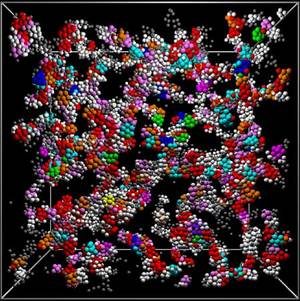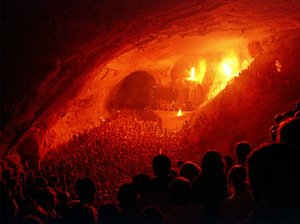The blue mystery object that I wrote about
yesterday may be considerably stranger than I'd first been led to believe. For starters, it's actually green. But there's so much more.
"As far as we can tell," Bill Keel told me this morning, "it's an unprecedented thing." Throughout the known universe "there is
nothing else that's quite like it," according to the University of Alabama astronomer.
For want of something better, Hanny's
Voorwerp is what the research community has taken to calling the mystery cloud (
Voorwerp being Dutch for object, apparently, and Hanny is the name of the science teacher who found it while participating in the Galaxy Zoo project). The enigmatic thing radiates a huge amount of light from a cloud of stars, Keel says. The mystery is why.

